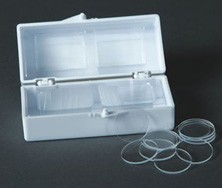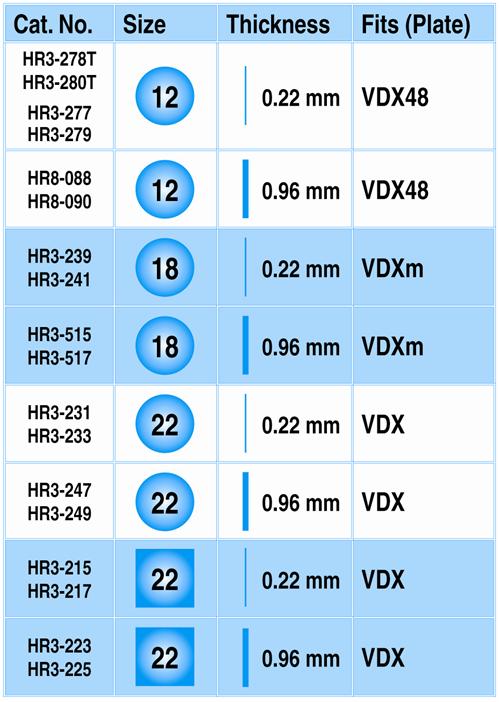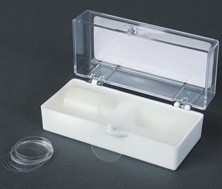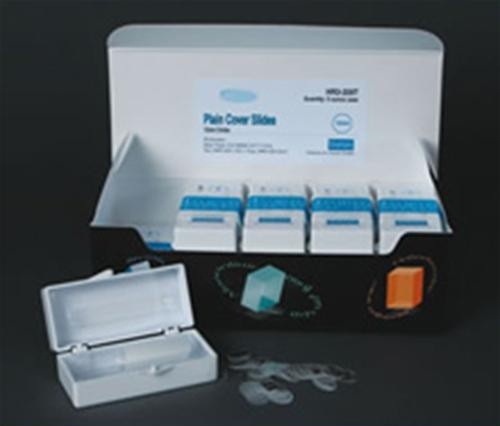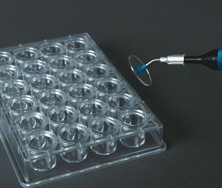Hampton CrystalEX Second Generation (Corning)

CrystalEx Plates
Applications
 Sitting drop crystallization
Sitting drop crystallization
Features
| 96 well sitting drop plate |
| Round and conical flat bottom drop well shapes |
| 1, 2 or 4 microliter drop wells |
| 1, 3 or 5 drop wells per reservoir |
| Hydrophilicity treated or untreated |
| PZero or COC plate material–UV imaging compatible |
Description
The second generation of Corning® 96 Well, sitting drop format plates are built to SBS specifications, making them well suited for high throughput crystallization and are fully compatible with robotic equipment. The plates are available in several different configurations with varying drop well shapes, plate materials, and number of drop wells per reagent well. The basic plate design is one reagent well flanked by one or three drop wells, with SBS standard spacing between the centers of adjacent well clusters. One may choose a plate with small (1 µl), medium (2 µl), or large (4 µl) drop well volumes. The choice of round or conical flat well shapes are available. The PZero polymer provides for zero background polarization and is non-birefringent. PZero plates are not treated. The COC polymer offers high chemical resistance. Both types of plastic feature improved transparency. The reservoir numbers are embossed on each individual well for easy identification. Drop well locations conform to SBS standards for robotic handling. The low-volume reagent well saves on reagent costs. The plates can be sealed using Crystal Clear Sealing Film (HR3-609), 3 inch wide Crystal Clear Sealing Tape (HR4-506) or ClearSeal Film™ (HR4-521).
Corning has discontinued 3557 – special pricing and limited inventory available for this item only.
| CAT NO | NAME | DESCRIPTION |
| HR8-135 | Corning 3556 | 4µl round drop well, 1 drop well, COC, untreated – 10 plate case |
| HR8-134 | Corning 3556 | 4 µl round drop well, 1 drop well, COC, untreated – 40 plate case |
| HR8-137 | Corning 3551 | 4 µl conical flat drop well, 1 drop well, COC, treated – 10 plate case |
| HR8-136 | Corning 3551 | 4µl conical flat drop well, 1 drop well, COC, treated – 40 plate case |
| HR8-139 | Corning 3552 | 2 µl round drop well, 3 drop well, COC, untreated – 10 plate case |
| HR8-138 | Corning 3552 | 2µl round drop well, 3 drop well, COC, untreated – 40 plate case |
| HR8-141 | Corning 3553 | 2 µl conical flat drop well, 3 drop well, COC, untreated – 10 plate case |
| HR8-140 | Corning 3553 | 2 µl conical flat drop well, 3 drop well, COC, untreated – 40 plate case |
| HR8-147 | Corning 3550 | 1µll conical flat drop well, 3 drop well, COC, untreated – 10 plate case |
| HR8-146 | Corning 3550 | 1µl conical flat drop well, 3 drop well, COC, untreated – 40 plate case |
| HR8-160 | Corning 3557 | 1 µl conical flat drop well, 5 drop well, PZero – 10 plate case |
| HR8-158 | Corning 3557 | 1 µl conical flat dro p well, 5 drop well, PZero – 40 plate case |


















